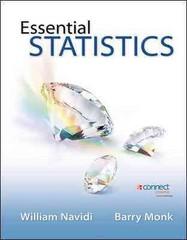Question
Please help me with the following multiple choice questions please. a. The misery index for Canada increased steadily from 1970 to 1990, but has since
Please help me with the following multiple choice questions please.
a. The misery index for Canada
- increased steadily from 1970 to 1990, but has since declined
- is closely but inversely related to the successes of the incumbent party
- is closely and positively related to the successes of the incumbent party
- is only loosely and inversely related to the successes of the incumbent party
- is not a good predictor of the successes of the incumbent party
b. Stagflation, that is, high unemployment combined with high inflation
- cannot persist, since the economy eventually will return to full employment
- can only occur if expansionary monetary policy is combined with restrictive fiscal policy
- is inconsistent with the inflation-expectations-augmented Phillips curve
- cannot occur as long as the expected inflation rate is above the actual inflation rate
- can only occur during the period of economy expansion
c. Which of the following is the most likely medium-run outcome of an adverse supply shock?
- an increase in consumer prices and a higher level of real GDP
- a decrease in real GDP
- an increase in real wage rates
- an increase in frictional unemployment
- an increase in nominal GDP with real GDP remaining the same
d. The misery index is constructed by
- adding the inflation rate and the unemployment rate
- multiplying the inflation rate with the unemployment rate
- dividing the inflation rate by the unemployment rate
- adding the sacrifice ratio and the replacement rate
- combining the sacrifice ratio with the unemployment rate
e. In the long run, monetary expansion should have the following result:
- nominal wages change in proportion to nominal money supply
- real interest rates remain constant
- real wages remain constant
- nominal wages and prices change in proportion to nominal money supply
- all of these are results from the monetary expansion
f. In the coordination approach to the Phillips curve, wages are considered to be sticky rather than flexible since
- firms encounter menu costs when changing wages but not when changing prices
- labour contracts contain cost-of-living adjustments
- firms tend to look at labour as an expendable resource
- firms are unsure about their competitors' behavior and only reluctantly change prices and wages following a change in aggregate demand
- the labour market involve long term contracts between firms and workers
g. In the static AD-AS model, what is the most likely long-run outcome of an oil price increase, if no policy change is implemented?
Multiple Choice
- real wages will decline while the levels of output and prices will remain unchanged
- the level of prices will increase while the level of output will remain unchanged
- the natural unemployment rate and the price level will both increase
- nominal wages and prices will increase, but real wages will remain unchanged
- real money balances and real wages will decline while nominal wages will remain unchanged
h. Suppose an increase in oil prices is accompanied by a decline in the level of potential output. Which of the following is the most likely long-run effect?
- real GDP will decrease but prices will increase
- real GDP and prices will both decline
- real GDP will remain the same but prices will increase
- real GDP will remain the same but nominal GDP will decrease
- the unemployment rate and prices will both decrease
i. The inverse relationship between inflation and unemployment is called
- Okun's law
- the Lucas curve
- the Phillips curve
- the replacement ratio
- the sacrifice ratio
j. If the government stimulates aggregate demand in response to a permanent adverse supply shock
- the inflation rate will increase but frictional unemployment will decrease
- the unemployment rate will increase but the inflation rate will decline
- an increase in unemployment can be avoided but only at the cost of increased inflation
- high inflation can be avoided but the rate of unemployment will increase
- the inflation and the unemployment rates will reduce simultaneously
Step by Step Solution
There are 3 Steps involved in it
Step: 1

Get Instant Access to Expert-Tailored Solutions
See step-by-step solutions with expert insights and AI powered tools for academic success
Step: 2

Step: 3

Ace Your Homework with AI
Get the answers you need in no time with our AI-driven, step-by-step assistance
Get Started


